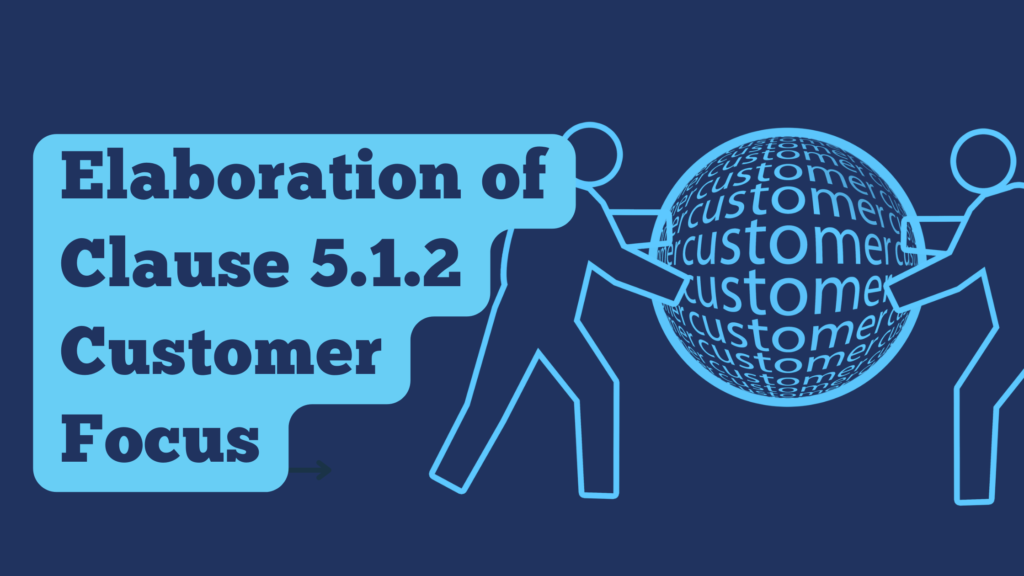Organizational roles, responsibilities and authorities – Clause 5.3! – The Elaboration

Roles, responsibilities and authorities must be defined so that everyone has the knowledge of what they have to do. Moreover, in what capacity they have the freedom to make decisions.
To keep the smooth working of an organization, there are a few important questions that need to be answered:
- What to do
- Why you should do it
- How to do it
- Who will do it
- When to do it
Here in this clause (5.3 Organizational roles, responsibilities and authorities), we will be focusing on point number 04 (Who will do it). In order to keep the working smooth everyone must know their roles, responsibilities and authorities.
When an employee enters the organization, he must know what he has to do, and what his responsibilities are. So that without wasting any minute he can start working on his job.
This is also necessary to define because, in case of any mishap, root-cause analysis becomes easy, and responsible can be identified. So that correction can be done. Before moving forward let us understand the terms:
- Roles
- Responsibilities
- Authorities
As per the dictionary, “role” is the expected behavior expected with a particular position. The “responsibility” is the duty you are assigned by the supervisor or the management to perform a certain job. On the other hand “authority” is the right to give command or order or make a decision.
These both are connected with each other. In a specific position, you have certain responsibilities (the tasks you have to fulfill) while you also have some authority (right to command) over your subordinates.
Management Representative
In the previous standard, there was a requirement for a management representative (ISO 9001:2008 clause 5.5.2) in which it was required that top management must delegate the responsibility of the quality management system to a designated person called a “management representative” which is also called as MR or QMR (quality management representative).
But unfortunately, the result of this requirement comes out as companies keep on thinking that managing all QMS is the responsibility of MR.
To break this perception, now in the ISO 9001:2015 there isn’t any requirement for MR, this was done so that leadership should be involved actively in the QMS rather than delegating a single person for the whole quality management system.
Though there is not any restriction, companies can continue to have this title (management representative) and the responsibilities associated with this designation.
Assignment of roles, responsibilities and authorities
In this standard, it is written that some responsibilities must be assigned to some positions by the leadership.
This can be a single person, or these responsibilities can be distributed to multiple personnel. This is up to the company and top management to decide.
Sub-Clauses Elaboration
Top management must assign duties and authorities regarding the following:
| ISO 9001:2015 Clause 5.3 Sub Clauses | Elaboration |
| a) Ensuring that the quality management system conforms to the requirements of this International Standard; | The company’s internal quality management system conforms to the requirement of this standard and every member of the organization plays his part in this accomplishment. But there must be someone responsible for this, ideally, managerial positions like the quality manager and compliance manager are suitable for this. |
| b) ensuring that the processes are delivering their intended outputs; | Focus on processes, for every process, there are some performance indicators that tell us that process has been performed perfectly or if there is any lacking. Someone has the responsibility to ensure and report this. |
| c) Reporting on the performance of the quality management system and opportunities for improvement (see 10.1), in particular, to top management; | There are several indicators, and statistics in the quality management system, the responsibility for this task must be able to collect the data, analyze them and transform them into a meaningful way so that opportunities for improvement can be suggested. This data has to be presented to top management. |
| d) Ensuring the promotion of customer focus throughout the organization; | Someone has the responsibility to promote throughout the organization that “customer” is our prime focus! |
| e) Ensuring that the integrity of the quality management system is maintained when changes to the quality management system are planned and implemented. | Someone must have the responsibility to facilitate if any change has to be introduced in the system, to take care that the quality of the system does not compromise with change. For this purpose organizations have “change management procedures” and usually a person is designated to look to receive the changes been made in the system. |
Assign, Communicate, and Understood
It is the responsibility of the top management to do these things regarding responsibilities and authorities:
- Assign: They have to assign the responsibilities, the list of the responsibilities we have defined under the heading (Assignment of responsibilities/authorities). The objective evidence required for this is a “job description” document.
- Communicate: they have to communicate those responsibilities to those who are assigned the responsibilities, these responsibilities are not confidential, everyone in the firm must know who is responsible for what, so that in case of any work or task they can approach them and people can approach him/her as well. As a piece of objective evidence, you have to make a hierarchy or organization chart to show the communication channel.
- Understood: for this purpose training sessions can be organized to make employees understand their roles, responsibilities and authorities
The following documents can be made to fulfill this requirement:
- Job descriptions
- Organization chart
- Hierarchy
- Defining roles in procedures, quality plans
Conclusion
To run a quality management system smoothly, everyone must be aware of their job description (their responsibilities and authorities). They must also know the line of communication, who is the senior, and who is the commanding body. Furthermore, not only their responsibilities but they should also be aware of other department personnel’s job descriptions.. This can be communicated to them during the induction training and orientation.



